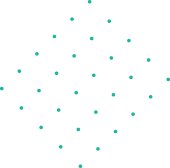In the realm of data science, raw data is often messy, inconsistent, and full of errors. Before conducting analysis or building machine learning models, data cleaning and preprocessing are essential steps to ensure accuracy and reliability. These processes involve handling missing values, removing duplicates, transforming data types, and normalizing datasets. Advanced Data Science Training Hyderabad offers a comprehensive learning path to master these critical data preparation techniques under the guidance of Subba Raju Sir, an expert in data science and machine learning.
Advanced Data Science Training Hyderabad
Data cleaning refers to identifying and correcting errors, inconsistencies, and inaccuracies in a dataset. This step enhances data quality, making it more suitable for analysis and modelling. Key tasks in data cleaning include:
- Removing duplicate entries
- Handling missing values
- Correcting inconsistent data formats
- Eliminating outliers
- Standardizing data types
What is Data Preprocessing?
Data preprocessing is a broader step that involves transforming raw data into a structured format before analysis. This process includes:
- Data integration: Combining multiple data sources into a unified dataset
- Data transformation: Normalizing, scaling, and encoding data
- Feature selection: Identifying the most relevant features for a model
- Data reduction: Reducing dimensionality without losing valuable information
By learning Advanced Data Science Training Hyderabad, professionals can efficiently preprocess data to build robust models and extract meaningful insights.
Tools for Data Cleaning and Preprocessing
Below are some of the most widely used tools for data cleaning and preprocessing:
- Pandas
Pandas is a powerful Python library for data manipulation and analysis. It provides functionalities to handle missing values, filter data, and perform aggregations.
Key features:
- dropna() for removing missing values
- fillna() for imputing missing data
- astype() for data type conversion
- duplicated() for finding and removing duplicates
- NumPy
NumPy is a fundamental library for numerical computing in Python. It is widely used for handling multi-dimensional arrays and performing mathematical operations.
Key features:
- numpy.nan to handle missing values
- numpy.reshape() for restructuring datasets
- numpy.mean() and numpy.median() for handling outliers
- Efficient matrix operations for data transformation
- OpenRefine
OpenRefine is a powerful open-source tool for working with messy data. It is especially useful for cleaning large datasets quickly.
Key features:
- Cluster and merge duplicate records
- Detect and fix inconsistencies in data formats
- Apply transformations across large datasets
- Undo and redo operations for safe data modifications
- Dask
Dask is an advanced parallel computing library that extends Pandas functionality for handling large datasets.
Key features:
- Handles out-of-memory datasets efficiently
- Parallel computation for faster execution
- Integrates with Pandas for large-scale data processing
- Scales from a single machine to a distributed system
- SciPy
SciPy is a scientific computing library that provides functions for mathematical and statistical operations.
Key features:
- scipy.stats.zscore() for outlier detection
- Interpolation techniques for missing value imputation
- Data smoothing and normalization
- Works seamlessly with NumPy for advanced data analysis
- Scikit-learn
Scikit-learn is a machine learning library that includes preprocessing tools to prepare data for modeling.
Key features:
- StandardScaler for standardization
- MinMaxScaler for normalization
- LabelEncoder for categorical encoding
- train_test_split for splitting datasets
20 FAQs on Data Cleaning and Preprocessing
- What is data cleaning in data science?
Data cleaning involves removing inconsistencies, errors, and missing values to improve data quality. - Why is data preprocessing important?
It transforms raw data into a structured format, making it suitable for analysis and modeling. - What are common techniques for handling missing data?
Techniques include imputation (mean/median/mode), deletion, and predictive modeling. - How do you remove duplicates in Pandas?
Use the drop_duplicates() function to remove duplicate records. - What is feature scaling in data preprocessing?
Feature scaling standardizes or normalizes data to bring it into a comparable range. - What is the role of OpenRefine in data cleaning?
OpenRefine helps in deduplication, format standardization, and large-scale data transformation. - How can NumPy handle missing values?
NumPy uses numpy.nan to represent and process missing values. - What are outliers, and how do you handle them?
Outliers are extreme values that can distort analysis. They can be handled using statistical methods like Z-score or IQR. - What is the difference between normalization and standardization?
Normalization scales data to a range (e.g., 0-1), while standardization transforms it to have a mean of 0 and variance of 1. - What is one-hot encoding in data preprocessing?
It converts categorical variables into a binary matrix representation. - How does SciPy help in data preprocessing?
SciPy offers statistical methods for missing value imputation, data smoothing, and outlier detection. - Why is data integration important?
It combines multiple data sources to create a comprehensive dataset for analysis. - What is data transformation in preprocessing?
It involves changing the format, structure, or values of data to improve its usability. - How does Dask improve data processing?
Dask allows parallel processing, handling large datasets efficiently beyond memory limitations. - What is label encoding?
Label encoding assigns numerical values to categorical variables. - How does Scikit-learn assist in feature scaling?
It provides StandardScaler, MinMaxScaler, and other preprocessing functions. - What is dimensionality reduction?
It reduces the number of features while retaining essential information (e.g., PCA). - What are the benefits of data preprocessing?
It improves model accuracy, data consistency, and computational efficiency. - What is the best tool for handling large-scale data preprocessing?
Dask and PySpark are ideal for processing large datasets efficiently. - Where can I learn advanced data cleaning techniques?
You can enroll in Advanced Data Science Training Hyderabad under Subba Raju Sir to master data cleaning and preprocessing.
By mastering data cleaning and preprocessing, data scientists can ensure high-quality datasets that enhance the accuracy of machine learning models. These steps are fundamental in transforming raw data into meaningful insights, making them indispensable in data-driven decision-making. With expert guidance from Subba Raju Sir, learners can gain hands-on experience in these essential techniques through Advanced Data Science Training Hyderabad. Investing time in mastering these processes will lead to better model performance, increased efficiency, and a more refined analytical approach in the field of data science.



